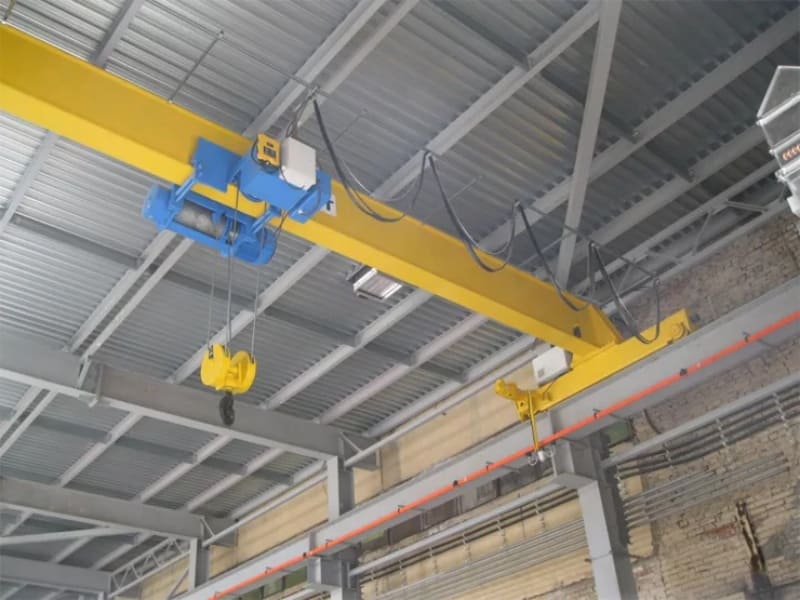A top running bridge crane is one of the most common and versatile types of overhead lifting equipment. Often referred to as an EOT crane (Electric Overhead Traveling crane), it consists of a fixed rail or track system installed on the top of each runway beam. The end trucks travel along these rails, carrying the bridge and hoist smoothly across the entire span of the working area. Because of this design, a top running bridge crane is highly efficient in facilities where heavy loads need to be handled safely and frequently.
One of the advantages of top running systems is their ability to accommodate both single girder and double girder bridge designs. A single girder bridge often uses an under-hung trolley and hoist, while a double girder bridge usually utilizes a top-running trolley and hoist. This flexibility allows engineers to customize a crane system to suit different lifting needs. For instance, a monorail overhead crane may be appropriate for linear movement along a fixed path, but when more versatility and larger lifting capacities are required, the EOT crane in a top running configuration provides greater advantages.
Unlike under running cranes, top running bridge cranes have virtually no limitation on capacity. They can be designed to handle loads ranging from a small 1/4-ton application to more than 100 tons. Because they ride on rails located above the runway beam, they can support wider spans and achieve greater lifting heights. For buildings with restricted headroom, this is especially important. A top running double girder bridge design allows the hoist and trolley to run on top of the girders, adding an extra 3 to 6 feet of hook height. This feature maximizes the available lifting height, something a monorail overhead crane cannot typically provide.
A top running bridge crane is ideally suited for workshops, warehouses, and heavy industrial environments where long spans and high capacities are required. When loads exceed 20 tons, a top running system becomes the most suitable choice. Supported by the building’s structural steel or by independent support columns, these cranes are designed for heavy-duty operations. In contrast, when lifting requirements are lighter, such as 20 tons or less, an under running or monorail overhead crane may be considered for greater flexibility.
Another key advantage of top running systems is that they eliminate the suspended load factor common in under running cranes. Because the crane is supported from the top, installation is simpler and future maintenance is easier. Service inspections, such as checking rail alignment or tracking, can be completed quickly with minimal downtime. Over its working life, the EOT crane in a top running design offers greater stability and efficiency compared to other crane systems.
While top running systems require periodic inspection of the rail or track alignment, this process is straightforward and less time-consuming than with other crane types. The robust design ensures long service life even under continuous operation. Many companies choose a top running bridge crane not only for its high capacity but also for its proven reliability and ease of service. Similarly, facilities that first adopt a monorail overhead crane for lighter lifting often expand into a full EOT crane system as their material handling needs grow.
In summary, the top running bridge crane is the most effective lifting solution for industries that demand high capacity, long spans, and maximum lifting height. With configurations available in both single girder and double girder designs, and with lifting capacities ranging from a few hundred kilograms to well over 100 tons, this type of EOT crane delivers strength, stability, and long-term value. For operations where flexibility and lighter loads are more important, a monorail overhead crane may be appropriate, but for heavy lifting and maximum efficiency, the top running system remains the preferred choice.








